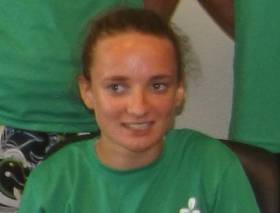Displaying items by tag: Junior Team
#Rowing: Margaret Cremen and Aoife Casey have been chosen to represent Ireland at the World Junior Championships in August in Lithuania. The junior double, which took silver at the European Junior Rowing Championships in Germany last month, tops the list of selections for the big events for underage rowers.
Four crews have been chosen for the Coupe de la Jeunesse (one, the junior men’s double provisional on their performance at Cork Regatta). A big junior team has also been named for the Home Internationals, which will be held in Scotland in July.
| Junior Team Selections 2017 |
|---|
| The following junior teams have been selected to race at international regattas this coming summer. This list will be finalised after Cork Regatta. (Details can be found at the end of this document). |
| Junior World Championships (Trakai, Lithuania, August 2-6) |
| JW2x |
| Margaret Cremen (Lee Rowing Club) |
| Aoife Casey (Skibbereen RC) Coach: Dan Buckley (Lee RC) |
| (Eleanor Casey, Skibbereen RC will travel with the crew as chaperone). |
| Coupe de la Jeunesse (Hazewinkel, Belgium, July 29-30) |
| JM4x- |
| Barry O'Flynn (Cork BC) |
| Matt Dundon (Clonmel RC) |
| Jack Keating (Carlow RC) |
| James Quinlan (Castleconnell BC) Coach: Ray Morrison (Fermoy RC) |
| JM2x (Provisional based on performance at Cork Regatta) |
| Oisin Clune (Three Castles) |
| Rory Quinn (Three Castles) |
| JW2- |
| Ellie O' Reilly (Fermoy) |
| Gill McGirr (Fermoy) Coach: John Walsh (St Joseph's RC) |
| JM4- |
| Nathan Timoney (Enniskillen) |
| Barry Connolly (Cork BC) |
| Ross Corrigan (Enniskillen) |
| Aaron Johnston (Enniskillen) Coach: John Walsh (St Joseph's RC) |
| Home International (Strathclyde, Scotland, July 22) |
| Junior Women - Sweep Team (Full Team) JW 4+ |
| Siobhan Maxwell (Commercial) Aishling Keogh (Commercial) Mia Kovacs (Shandon) |
| Chelsey Minehane (Shandon) Cox: Vicky Hanlon (Cork BC) |
| JW4- |
| Mia Jane Elliot (Enniskillen) Zoe McCutcheon (Enniskillen) Caitlyn Fee (Enniskillen) Miriam Kelly (Enniskillen) |
| JW2- |
| Megan Tully (Shannon) |
| Megan Carmody (Shannon) |
| *The JW Eight will be a combination of the 4+ and the 4- |
| Junior Men - Sweep Team (One pair will be added after Cork Regatta) |
| Coach: Fran Keane (Presentation College RC) |
| Olly O' Toole (Commercial) Edward Meehan (Commercial) Michael Lynch (Commercial) Ewan Jarvis (Commercial) Tom McKeon (SMRC) |
| Dylan O' Byrne (SMRC) |
| Odhran Donaghy (Enniskillen) Cox: Rory Farragher (Enniskillen) |
| Coach: Stewart Davis (Lee RC) |
| Junior Women - Sculling Team (There will be two names added after Cork Regatta) |
| Cliodhna Nolan (Carlow RC) |
| Georgia O'Brien (Kenmare) |
| Ciara Browne (Workmans) |
| Anna O'Sullivan (Fermoy RC) |
| Ciara Moynihan (Workmans) Coach: TBC |
| Junior Men - Sculling Team (There may be two names added after Cork Regatta) |
| Aaron Christie (Bann) |
| Tadhg McKnight (Three Castles) Alex Byrne (Shandon BC) |
| Andy O'Toole (Carlow RC) |
| Ross O'Brien (Carlow RC) Coach: TBC |
| *All selections are subject to continued performance and a willingness to partake in organised squad sessions and training camps as deemed necessary. |
| CORK CITY REGATTA: |
| Any person who is not pre-selected on this document, and who wishes to be considered for the remaining Home International places on the Men's Sculling and Sweep teams and Women's sculling team, are asked to enter JUNIOR 18 A (Div.1) 1x or 2- at Cork City regatta (June 24/25). |
| The highest ranked 1x or 2- from the finals will be considered to fill these positions. If no boat makes final A, B or C then the fastest times from the heats will be used. (i.e. Grand league and trial format). |
| Coaches must email their athletes intention to race to [email protected] (Sweep) or to [email protected] (Sculling) by 14/06/2017 and also to submit their most recent 2k erg score. |
























































